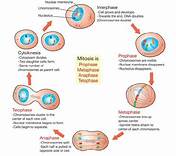
Week 3: Cell Cycle and Cell Division; Meiosis in Sexual Reproduction in Plants
The cell cycle can be thought of as the life cycle of a cell. In other words, it is the series of growth and development steps a cell undergoes between its “birth”—formation by the division of a mother cell—and reproduction—division to make two new daughter cells.
Stages of the cell cycle
To divide, a cell must complete several important tasks: it must grow, copy its genetic material (DNA), and physically split into two daughter cells. Cells perform these tasks in an organized, predictable series of steps that make up the cell cycle. The cell cycle is a cycle, rather than a linear pathway, because at the end of each go-round, the two daughter cells can start the exact same process over again from the beginning.
In eukaryotic cells, or cells with a nucleus, the stages of the cell cycle are divided into two major phases: interphase and the mitotic (M) phase.
- During interphase, the cell grows and makes a copy of its DNA.
- During the mitotic (M) phase, the cell separates its DNA into two sets and divides its cytoplasm, forming two new cells. Reference:
- Master Success Text Book of Botany C by Dr. Riaz-ul-Ramay
- Cell Biology; Cytology, Biomolecules and Molecular Biology by PS VERMA, V K AGRWAL and S CHAND


